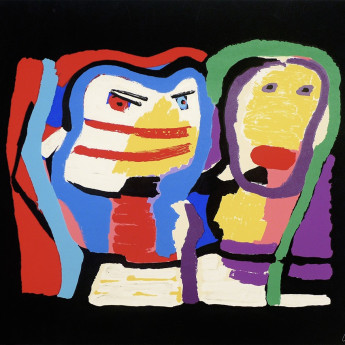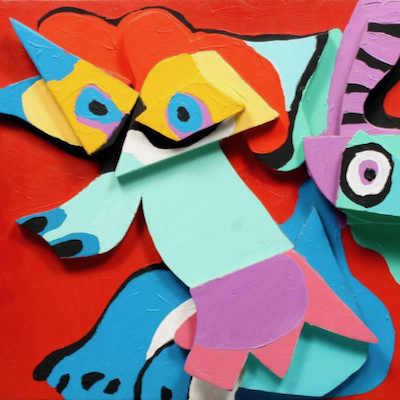
Details
Artist
Styles
Hand-signed and numbered. Däumelinchen (1999) by Corneille is a lithograph that captures the artist's signature whimsical and surreal style, blending bold colors with imaginative forms. A red tulip stands at the center of a fantastical landscape, its petals flowing like flames, while above it soars a black bird with a woman's face, suggesting transformation or mythological narrative. Bright yellow shapes in the background evoke abstracted trees or fields, creating a dreamlike environment where nature and fantasy merge. The title refers to the fairy tale "Thumbelina," and Corneille's visual interpretation plays with the themes of growth, femininity, and escape. The work's childlike immediacy is tempered by its symbolic depth, making it both playful and contemplative. Printed in an edition of 250, each piece is hand-signed and numbered by the artist.
Däumelinchen, 1999
form
Medium
Size
76 x 57 cm
- Inches
- Centimeters
Edition
Price
- USD
- EUR
- GBP
Details
Artist
Styles
Hand-signed and numbered. Däumelinchen (1999) by Corneille is a lithograph that captures the artist's signature whimsical and surreal style, blending bold colors with imaginative forms. A red tulip stands at the center of a fantastical landscape, its petals flowing like flames, while above it soars a black bird with a woman's face, suggesting transformation or mythological narrative. Bright yellow shapes in the background evoke abstracted trees or fields, creating a dreamlike environment where nature and fantasy merge. The title refers to the fairy tale "Thumbelina," and Corneille's visual interpretation plays with the themes of growth, femininity, and escape. The work's childlike immediacy is tempered by its symbolic depth, making it both playful and contemplative. Printed in an edition of 250, each piece is hand-signed and numbered by the artist.
- Recently Added
- Price (low-high )
- Price (high-low )
- Year (low-high )
- Year (high-low )
What is the CoBrA movement?
CoBrA stands for Copenhagen, Brussels, and Amsterdam; the group was formed with a desire to break away from the existing art movements of the time. Their critique of Western society led them to experiment and evolve into a significant international movement. CoBrA was founded on November 8, 1948, at the Notre Dame Café in Paris, where its manifesto was signed by Karel Appel, Joseph Noiret, Corneille, Christian Dotremont, Constant, and Asger Jorn. The group was united by a shared commitment to freedom in both form and color, and their work emphasized experimentation and spontaneity.






















